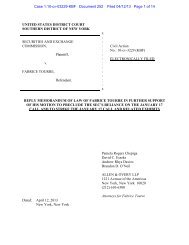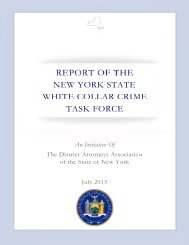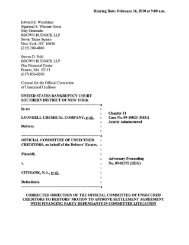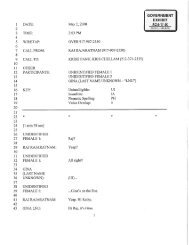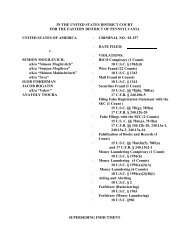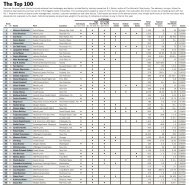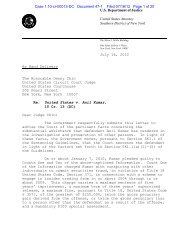Salz Review - Wall Street Journal
Salz Review - Wall Street Journal
Salz Review - Wall Street Journal
You also want an ePaper? Increase the reach of your titles
YUMPU automatically turns print PDFs into web optimized ePapers that Google loves.
<strong>Salz</strong> <strong>Review</strong><br />
An Independent <strong>Review</strong> of Barclays’ Business Practices<br />
86<br />
Culture and Leadership by Business<br />
8.32 There has been much speculation about the extent to which the investment bank<br />
dominated, and influenced the culture and behaviours of the retail bank. Our analysis<br />
concluded that, although there was some truth in this speculation, attempts to<br />
influence the retail bank were generally resisted. Decentralisation, the lack of mobility<br />
between the different businesses, as well as the launches of inconsistent values and<br />
cultural initiatives in each of the different businesses, led to a sense of cultural<br />
difference and cultural distance between the divisions rather than a sense of one<br />
culture with one clear sense of purpose and one set of values. Nevertheless, it does<br />
seem clear that some behaviours and values became increasingly common –<br />
commercial performance at the expense of a more balanced perspective perhaps<br />
being the most significant.<br />
8.33 Although we did not find much evidence of the investment bank influencing the<br />
culture of the rest of the Group, we did find some examples:<br />
― Between 2005 and 2011, internal movements into the Group Centre<br />
(Executive Committee and Group functions) predominantly comprised<br />
leaders from the investment bank and wealth management;<br />
― Because these leaders had been with the Group longer than many senior<br />
leaders in the retail bank or Group functions, they typically seemed to have<br />
more influence in decision making at Group level;<br />
― There was a programme of re-assigning clients from the Corporate Bank to<br />
the investment bank which (at least at the time) encouraged internal<br />
competition about ownership of clients.<br />
8.34 In any group, the role models are important. At Barclays, the compensation system,<br />
promotions, and senior recruits all pointed in one direction. Financial contribution<br />
was paramount. In both the retail bank and the investment bank, the success stories<br />
were largely attached to strong personalities, successful sellers and revenue earners<br />
and individuals who demonstrated cleverness and an ability to win. We now turn to<br />
some of the individual business units.<br />
Barclays Capital, the Corporate Bank, and Wealth<br />
8.35 The investment bank grew fast over a relatively short period of time (indeed, until<br />
2001, Barclays’ Business Bank generated more revenue than the investment bank).<br />
The investment bank had a distinct, tightknit and consistent leadership team and<br />
operated as a relatively independent business within Barclays. We identified three<br />
(partly overlapping) phases with distinct characteristics: the ‘edgy underdog’ of the<br />
early years (1999-2003), with a narrowly focused business model; the rapid organic<br />
growth phase (2003 to 2007); and the financial crisis years (which included the 2008<br />
acquisition of Lehman) to 2012 by which time it had become a leading global<br />
investment bank. In just over a decade, the weight of Barclays’ business model has<br />
moved from one based on relatively simple consumer products to one whose<br />
revenue depends increasingly on far more complex investment banking.




